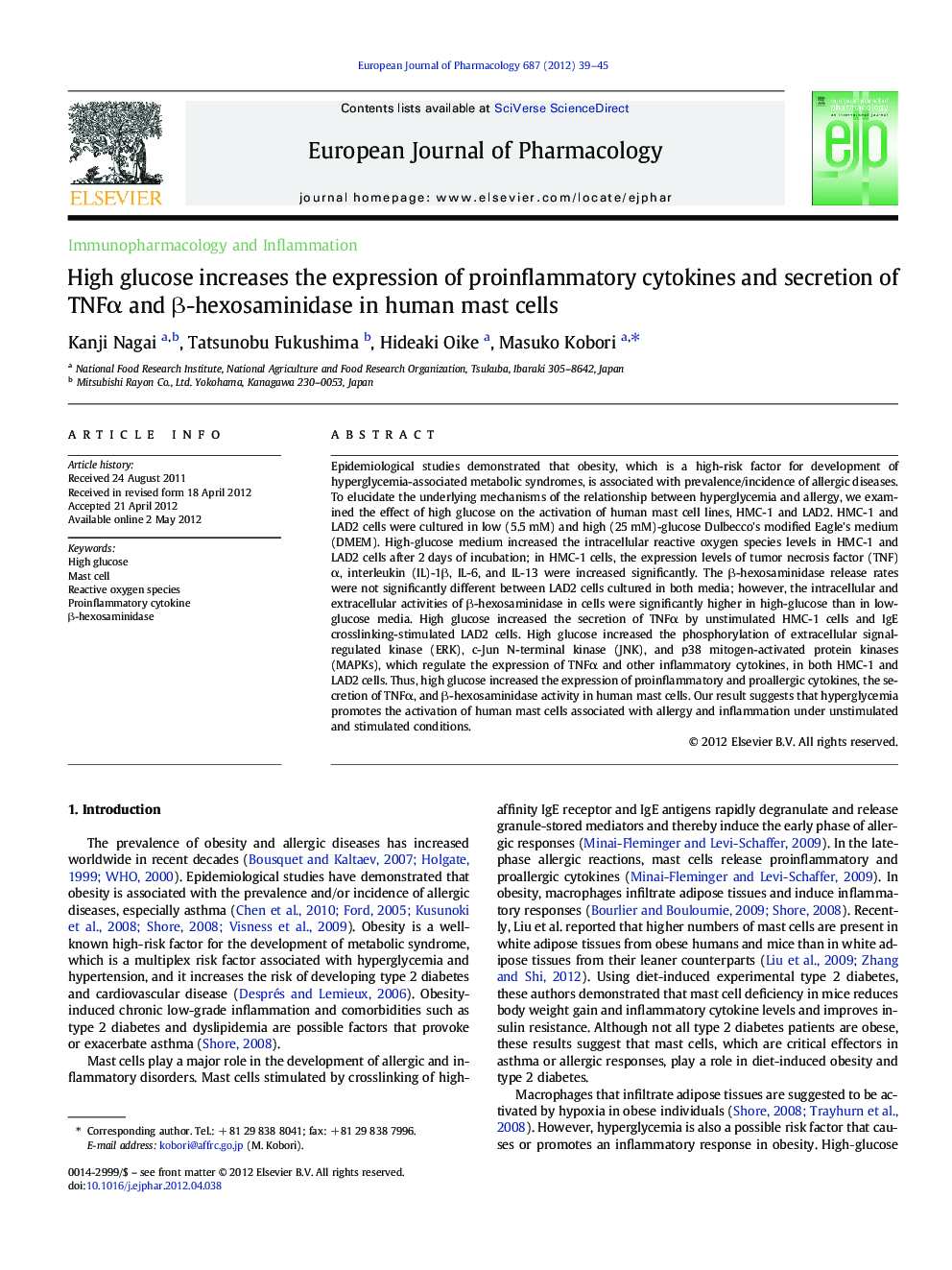| Article ID | Journal | Published Year | Pages | File Type |
|---|---|---|---|---|
| 5829471 | European Journal of Pharmacology | 2012 | 7 Pages |
Abstract
Epidemiological studies demonstrated that obesity, which is a high-risk factor for development of hyperglycemia-associated metabolic syndromes, is associated with prevalence/incidence of allergic diseases. To elucidate the underlying mechanisms of the relationship between hyperglycemia and allergy, we examined the effect of high glucose on the activation of human mast cell lines, HMC-1 and LAD2. HMC-1 and LAD2 cells were cultured in low (5.5 mM) and high (25 mM)-glucose Dulbecco's modified Eagle's medium (DMEM). Highâglucose medium increased the intracellular reactive oxygen species levels in HMC-1 and LAD2 cells after 2 days of incubation; in HMC-1 cells, the expression levels of tumor necrosis factor (TNF) α, interleukin (IL)-1β, IL-6, and IL-13 were increased significantly. The β-hexosaminidase release rates were not significantly different between LAD2 cells cultured in both media; however, the intracellular and extracellular activities of β-hexosaminidase in cells were significantly higher in high-glucose than in low-glucose media. High glucose increased the secretion of TNFα by unstimulated HMC-1 cells and IgE crosslinking-stimulated LAD2 cells. High glucose increased the phosphorylation of extracellular signal-regulated kinase (ERK), c-Jun N-terminal kinase (JNK), and p38 mitogen-activated protein kinases (MAPKs), which regulate the expression of TNFα and other inflammatory cytokines, in both HMC-1 and LAD2 cells. Thus, high glucose increased the expression of proinflammatory and proallergic cytokines, the secretion of TNFα, and β-hexosaminidase activity in human mast cells. Our result suggests that hyperglycemia promotes the activation of human mast cells associated with allergy and inflammation under unstimulated and stimulated conditions.
Related Topics
Life Sciences
Neuroscience
Cellular and Molecular Neuroscience
Authors
Kanji Nagai, Tatsunobu Fukushima, Hideaki Oike, Masuko Kobori,
